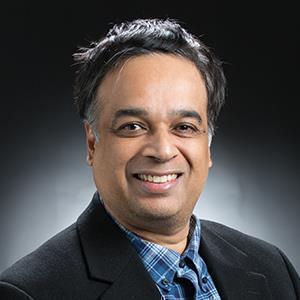Goals
One of our goals is to provide a platform for the broad E&C community to learn more about key topics related to both critical early infrastructure and long-term E&C planning and operations. Our community is dynamic – from engineers, to program managers, students, researchers, executives, Earth-centered innovators, and much more. The E&C audience is comprised of a diverse group of folks interested in the many aspects of “Building on the Moon.” We hold this space to learn from each other, engage in deep discussion, understand gaps and opportunities, and propel the field forward.
This FA also wants to engage in community discourse and knowledge-sharing via Confluence or other platforms. Our monthly meetings are well-attended and full of vibrant discussion. To keep the community engaged between meetings, we encourage the use of Confluence. Check out the “Who’s Who” page to introduce yourself. There are also pages to share resources, such as potentially relevant publications, standards, terrestrial innovations, and more.
Activities
- Monthly E&C FA meetings featuring guest speakers, including co-hosted meetings with the LSIC Crosscutting Capabilities (CC) FA
- Networking and community breakout discussions
- Annual workshop
Reference Information

Jibu Abraham
Jibu Abraham
LSIC E&C Co-Lead
Jibu Abraham is a member of the Senior Staff in the Air & Missile Defense sector of APL. He has extensive experience in the full cycle development of complex flight related hardware. He has designed, developed and analyzed mechanical/electromechanical components for missile, UAV, and nuclear systems. His experience includes mechanical design, systems engineering, structural analysis, GD&T, and fabrication with rapid prototype systems.

Athonu Chatterjee
Athonu Chatterjee
LSII E&C Systems Integration Lead
Johns Hopkins University Applied Physics Laboratory
DDr. Athonu Chatterjee is a researcher in the space exploration sector of APL. His background is in mechanical engineering, materials processing, and modeling and simulation. His present activities at APL include laser-material interaction, spacecraft design, and lunar surface technologies. Prior to joining APL, he worked at the research centers of General Electric (GE) and Corning. There he worked on new product and process development for diverse applications such as high-temperature ceramics matric composites (CMC) for aircraft engines, turbine blade manufacturing processes, solid-oxide fuel cells (SOFC), micro-reactors, etc. He obtained his Ph.D. in mechanical engineering from Stony Brook University, NY.

Sarah Hasnain
Sarah Hasnain is an impact-driven Astrophysicist and Software Developer. They have supported several flagship NASA missions including Dragonfly, OSIRIS-REx, and the Double Asteroid Redirection Test (DART) – NASA's first planetary defense mission. They are a first-generation college graduate, having earned a Bachelor's Degree in Physics from Notre Dame of Maryland University, a Women's College in Baltimore, MD. Currently pursuing graduate studies at Johns Hopkins University in Systems Engineering with a Human Systems focus. Sarah's project interests include: Innovation Strategy, AI Ethics, Systems Medicine, Human Factors, Bio-Inspired Tech, Serendipity in Big Data, Disability and Health in Space.

Claudia Knez
Dr. Claudia Knez is a Senior Scientist at the Applied Physics Laboratory. She has a PhD in Astronomy from the University of Texas at Austin. She has expertise in space environment applications, astronomy, systems engineering, and project management. She has participated in and led a number of diverse projects including several internally funded research projects.
Power
A continuous power supply is necessary to create a sustained lunar presence, especially during the initial stages when excavation and construction will be needed to establish this presence. The Surface Power Focus Group has developed technologies to supply this continuous power throughout day and night.
What power considerations are necessary for E&C operation?
- Missions in the past were able to be timed to coincide with optimal conditions; however, to establish a sustainable presence, all conditions will need to be properly accounted for (i.e., how can we survive the lunar night?)
- Solar energy capability will be limited during the lunar night.
- Can a fission power source provide enough power?
ISRU
To create a sustained presence on the Moon, it is important to make use of the resources that can be found on the surface, rather than relying on resources being transported from Earth. The In-Situ Resource Utilization (ISRU) Focus Group has advanced technologies that will allow for the collection, processing, storing, and use of material found on the lunar surface.
How can processes (like collecting and purifying water, sorting granular lunar regolith, measuring oxygen content) provide natural materials necessary for construction and how can this impact our construction techniques?
How can we create materials for Additive Manufacturing (or 3D Printing) or concrete?
Extreme Environments
Excavation and construction on the lunar surface require technologies that can withstand extreme conditions, for example, drastic temperature changes and permanently shadowed regions. The Extreme Environments Focus Group has progressed these technologies, allowing for full-range operation and survival.
How may lunar geophysical features alter the way we think about E&C on the Moon?
- Equipment/machinery will need to be developed diligently to robustly account for roadblocks presented by these geophysical features because a common hazard is fresh craters with steep walls and boulder-strewn rims.
- Natural lunar geophysical features (like lava tubes) can be optimized and used advantageously for habitats.
Dust Mitigation
Dust mitigation is a crucial component to being able to establish a sustained lunar presence. As the dust is angular and highly electrostatic, it can easily and quickly build up and cause damage to spacesuits, equipment, and even human health. The Dust Mitigation Focus Group has developed technologies to protect lunar systems and allow for excavation and construction to take place in order to create this sustained presence.
How can lunar dust impact E&C equipment?
- Lunar dust grain shape allows grains to become embedded in spacesuits and reduce their lifetime.
- Dust being kicked up from vehicles increases the friction at mechanical surfaces and can reduce equipment lifetime.
- Dust accumulation can impair visibility and scratch lenses, thus, reducing the effectiveness and lifetime of sensors.
- The electrostatic discharge of the dust grains can cause large static voltages to enter electronics and damage the internal circuitry.
Extreme Access
To create a sustained lunar presence, we will need to go to areas that we have not been to so that excavation and construction can take place. The Extreme Access Focus Group has expanded technologies that enable both human and robotic systems to access, navigate, and explore previously inaccessible lunar areas.
How can we prepare to access lunar areas that may not have been accessed before?
Permanently shadowed regions are dark and cold, while the opposite is true for peaks of eternal light, so equipment will need to be able to work in these sorts of conditions.



